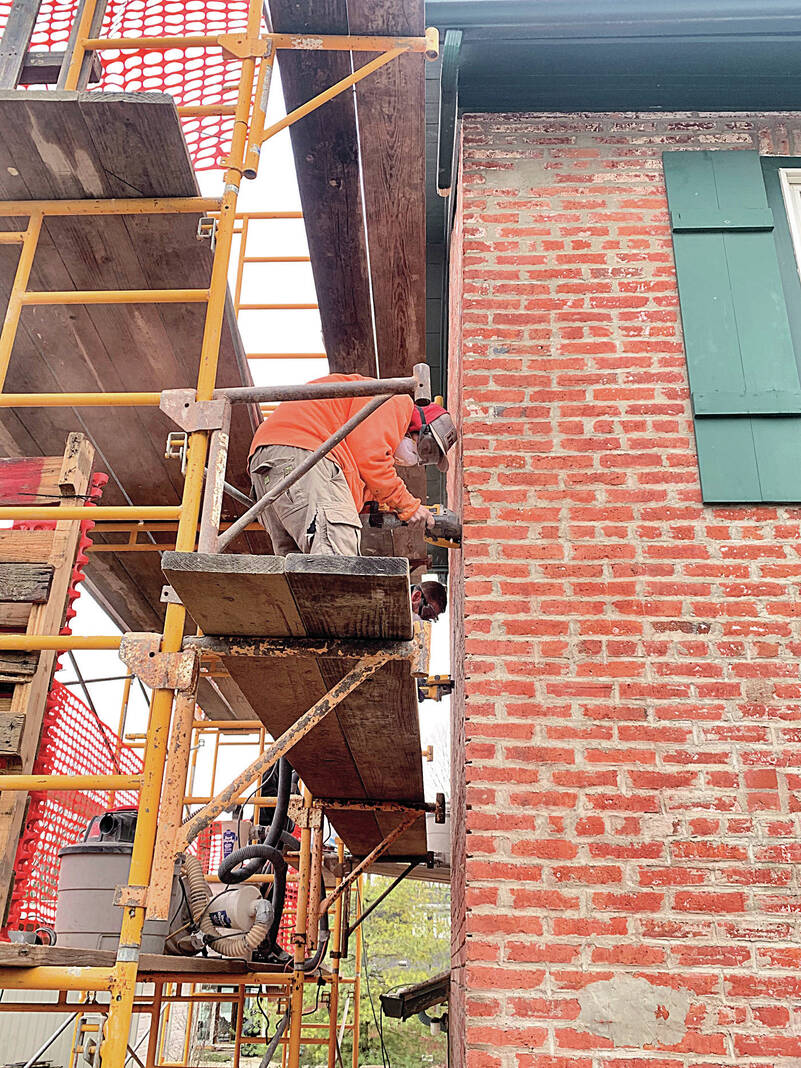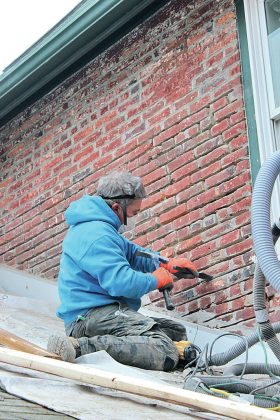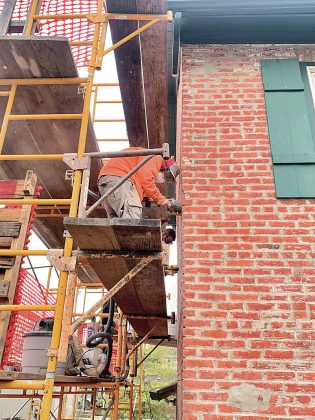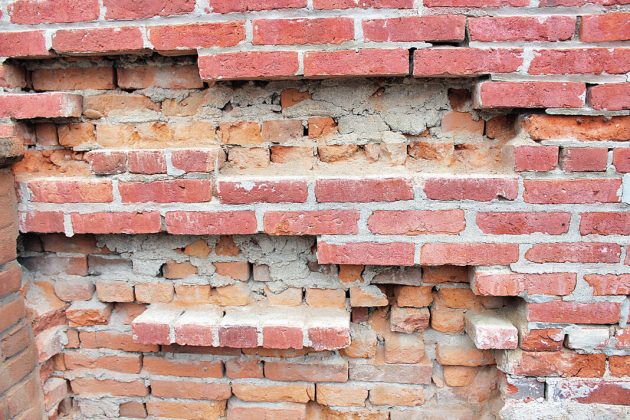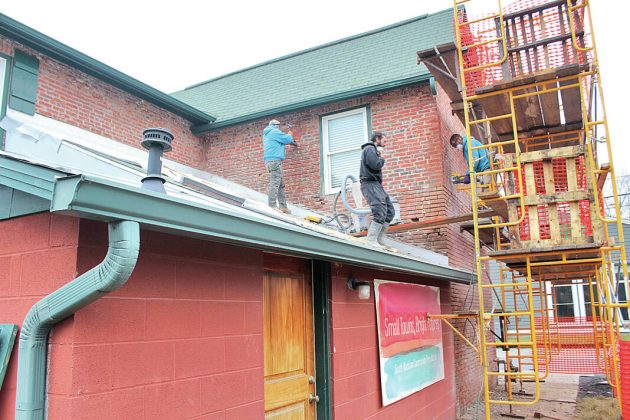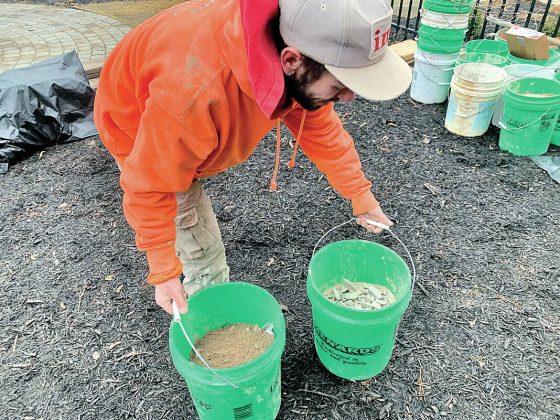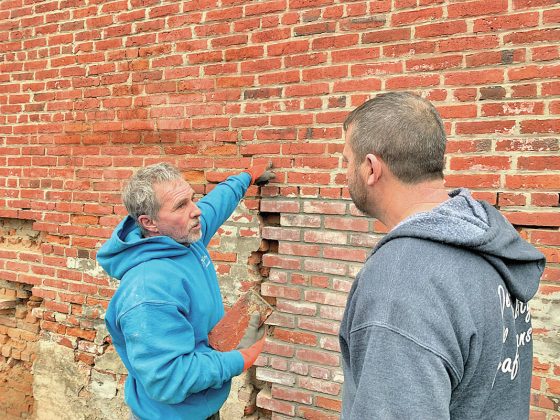PENDLETON — Unseasonably warm weather allowed preservation work to begin last week on the exterior of Thomas Pendleton House, a structure with local historical significance, including ties to the man for whom the town is named.
It’s the beginning of a multi-year, multi-phase plan to ensure the future of a valuable community asset.
“This is the most important part of it (the project),” said Tammy Bowman, executive director of South Madison Community Foundation, which owns and occupies the building, located at 233 S. Main St.
On Friday, workers from local contractor DMA Masonry had scaffolding set up along the back of the brick structure, where they were grinding and hand-chiseling out mortar from between the bricks.
DMA Masonry owner David Ashton said the plan is to remove the mortar to a depth of half an inch to an inch and replace it with a special ready-mix mortar similar to what was used prior to 1900, back when the house was built.
At that time, “everything was really soft,” Ashton said, referring to the mortar consistency.
He estimated the work, including the replacement of some missing and crumbling bricks, could take a month or more.
Bowman said after the mortar and brick work is done, the front porch roof and pillars will be removed, along with the exterior window shutters.
The roof and gutters also will be repaired.
“That will help the building shed the effects of water away from it,” she said.
The cost of the work will be about $50,000, and it’s all part of Phase 1 of a project that will take several years to complete.
The work not only will help preserve the house, which was gifted to the community foundation in 2005, but will also help return it to its original look, Bowman said.
The project is being guided by a preservation plan completed in the summer of 2022 by Fishers-based architectural and engineering firm RQAW Corp.
The community foundation, a non-profit organization with a mission to make positive change through a variety of projects — often involving the awarding of grants and scholarships — hired RQAW to research and write the plan, which is 35 pages long, with additional appendices comprised of photographs and cost estimates.
The plan includes a history of the house in the context of the town’s settlement and development, the architecture of the day and ownership history.
“The Thomas Pendleton House is significant in the area of Settlement for its association with the Pendleton family and the Town of Pendleton’s settlement,” the plan states.
“The Thomas Pendleton House is significant in vernacular architecture and construction,” the plan states in a section evaluating the home’s significance. “The structure is one of the best and earliest examples of a Colonial Federal Style L-plan (or I-house with rear wing) house in Pendleton.”
The plan also describes the physical features of the two-story, 1,976-square-foot home and includes a conditions assessment, work recommendations, priorities and a list of potential costs totaling between $125,000 and $155,000.
Bowman said the total project cost considering all the work needed inside and out will probably be closer to $200,000.
Funding for the work will come from preservation grants as well as a maintenance endowment, which came with the house from the estate of Charlie Owens.
The work will “in no way decrease our community grant-making,” Bowman said.
The next phase of the project likely will take place mid to late summer, she said, timed to coincide with the town’s Elm Street and Pendleton Avenue Drain project and Elm Street and Main Street Roadway Reconstruction project.
The town work will include storm drain improvements along a railroad bed and roadway reconstruction on Elm Street from Main Street to Pendleton Avenue as well as on Main Street from Elm Street to Madison Avenue.
Thomas Pendleton House sits on the southeast corner of Main and Elm streets.
“Our whole corner will be affected by that (town) project,” she said.
Phase 2 of the preservation work will include redesigning the area at the front of the house between the front door and the sidewalk as well as other work on the property that won’t be done until after the town completes its work involving sidewalks and curbs.
Bowman previously said the community foundation wants to do the preservation work “to the best of our ability, to ensure that the history is showcased for future generations to witness.”
The preservation plan will be followed, moving as quickly or slowly as funding permits, Bowman said. The foundation will “take our time, do it right.”
Future phases will include foundation and flooring work, as well as door, windows, venting, stairs and more.
There’s also more potential work involved with creating an indoor space for community meetings and gatherings.
